This was the transmitting source for the JASON cryptosystem. Norman Brooks, a former operator, shares his experiences with this equipment. "In 1969 I was posted to CFS Mill Cove, Nova Scotia. In the early 70's, the exact year escapes me, the Navy LR broadcast was transferred from Marcom HQ in the Navy Dockyard to CFS Mill Cove. Several of us made the trek to MARCOM to learn the broadcast and then when the equipment was transferred to Mill Cove, we taught the rest how to run the broadcast. Without going into too much detail, the transmitter used three encryption units, comparing outputs and by acknowledgment, two of the three decided on the output to be sent to the transmitter.When it was first installed in the basement at Mill Cove, it was placed on a large wooden table, believe it or not. One night, prior to going on line (the unit was still in test) the tech's had one of the units out on its rails. A second unit was pulled out and the technician turned around to get something from his toolbox. To everyone's, and no one's surprise, the entire unit tipped over onto the floor dropping from several feet. It had not been secured !
These units were built like battleships and other than some damage to the handles the unit functioned correctly once it was returned to its correct attitude. I went on in 1975 to become a technician and I was trained in the operation and maintenance of the '37 at the Fleet Comm school in "Stad".
A former shipboard user comments: "When the registered publications custodian (usually the most junior officer aboard) issued us the wrong month's keying material, the entire US 7th fleet was without intelligence support until we could figure out what was wrong!"
In the Royal New Zealand Navy, the BID/580/1 was used in lieu of the KW37R, but the the KW37T
was used ashore to transmit to the ships.
Tony Magon, ex Leading Radioman RNZN, recalls his experiences with the KWT37. "It could be a real pain when not running right and setting off the high pitched alarm. The main problem seemed to be with the PC boards making an intermittent connection to the motherboard. One shift, when Jim Dell (Watch Supervisor) was on leave and I was in the acting IC of the watch, the alarm started its high pitched beeping. After ringing the duty tech for a solution, I had to swap some boards which finally stopped the piercing alarm. Apparently there were some spare boards sitting in the top of the cabinet just in case this problem arose. I am not sure if this KWT37 was new when we got it in the late 60s or very early 70s, because I can remember its alarm going off with regularity after we first got it".
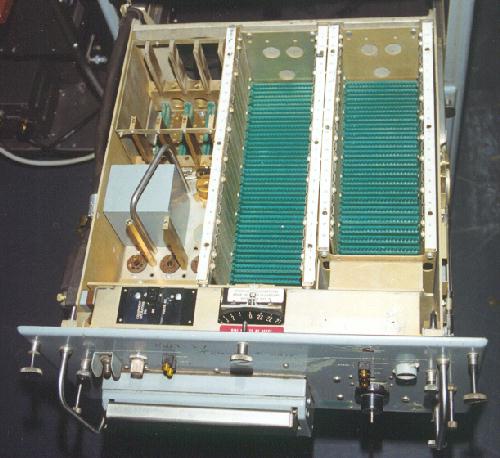 |
| Top view of the KWT-37 transmitting unit (1 of 3). At the left middle is the power supply. The act of removing key components from crypto machines is called "sanitization" . This includes all of the security markings as well. |
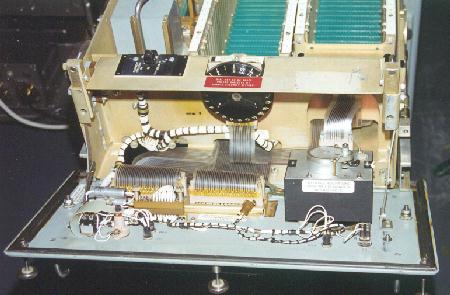 |
| Here, the front panel has been swung down in order to view the components on the rear of the front panel. |
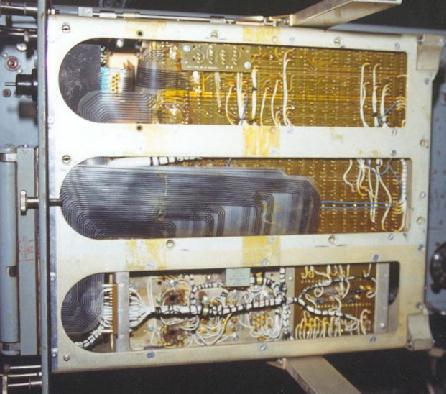 |
|
|
|
|
PARTS
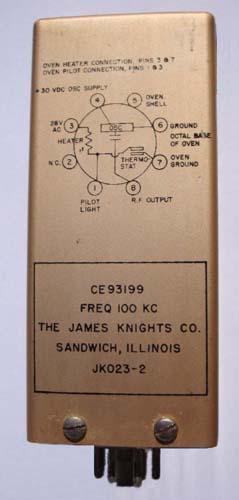 |
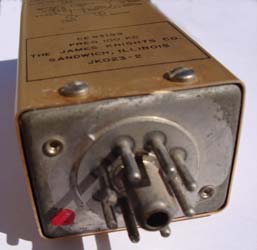 |
 |
|
| This is clock module from a KWT-37 serial No.155 that was used in the PRAC Deck of Radioman "A" School in the U.S. (Photos by Jerry Myers) | |
References and credits:1) Jim Dell <dinger69(at)xtra.co.nz>
2) Jerry Myers <jerry1joan(at)aol.com>
3) Norm Brooks< nbrooks(at)accesscable.net
4) Communications and Electronics Museum , Kingston, Ontario
5) Tony Magon, VK2IC, <temagon@gmail.com>
Dec 8/13